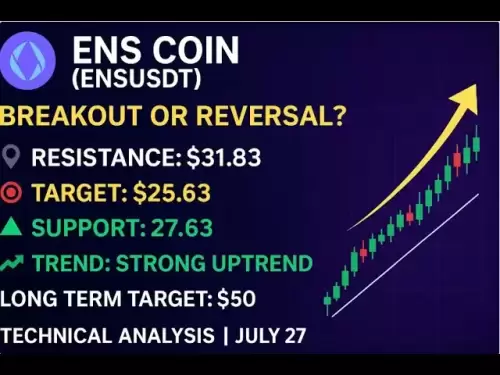-
 Bitcoin
Bitcoin $117900
0.31% -
 Ethereum
Ethereum $3766
0.28% -
 XRP
XRP $3.176
-0.31% -
 Tether USDt
Tether USDt $1.000
0.00% -
 BNB
BNB $795.6
1.51% -
 Solana
Solana $186.8
-1.09% -
 USDC
USDC $0.9999
-0.01% -
 Dogecoin
Dogecoin $0.2353
-1.33% -
 TRON
TRON $0.3226
1.49% -
 Cardano
Cardano $0.8172
-1.08% -
 Sui
Sui $4.178
3.06% -
 Hyperliquid
Hyperliquid $43.05
-3.39% -
 Stellar
Stellar $0.4367
-0.57% -
 Chainlink
Chainlink $18.62
1.47% -
 Hedera
Hedera $0.2828
6.63% -
 Bitcoin Cash
Bitcoin Cash $584.7
5.65% -
 Avalanche
Avalanche $24.81
2.53% -
 Litecoin
Litecoin $112.8
-0.88% -
 UNUS SED LEO
UNUS SED LEO $8.975
-0.08% -
 Shiba Inu
Shiba Inu $0.00001395
-1.07% -
 Toncoin
Toncoin $3.285
-1.05% -
 Ethena USDe
Ethena USDe $1.001
0.01% -
 Polkadot
Polkadot $4.123
0.76% -
 Uniswap
Uniswap $10.49
-0.18% -
 Monero
Monero $326.5
0.14% -
 Dai
Dai $0.9999
-0.02% -
 Bitget Token
Bitget Token $4.576
0.34% -
 Pepe
Pepe $0.00001247
-1.55% -
 Cronos
Cronos $0.1400
3.77% -
 Aave
Aave $295.1
-0.73%
Are USDT transactions anonymous?
USDT transactions are pseudonymous, not anonymous; your wallet address, though not your name, is publicly linked to all transactions. While Tether aims for transparency, KYC/AML regulations and blockchain's public nature limit privacy, even with mixing services.
Mar 07, 2025 at 12:15 pm
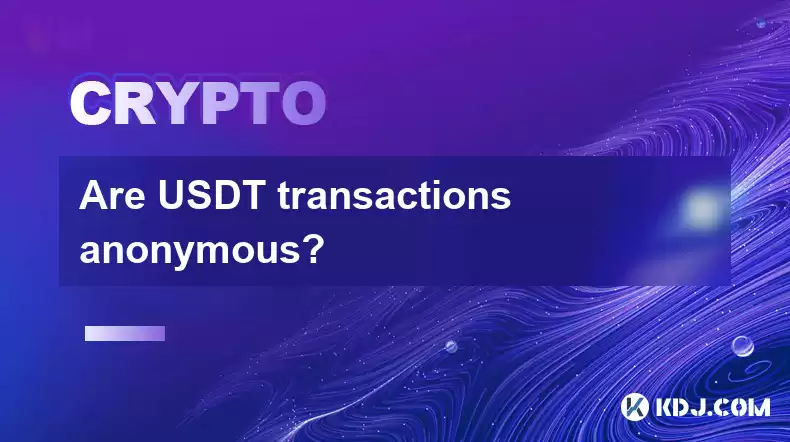
Key Points:
- USDT transactions are pseudonymous, not anonymous. While they don't directly reveal your real-world identity, they are linked to your cryptocurrency wallet address.
- Tether's transparency initiatives aim to improve traceability, but complete anonymity is not possible with blockchain technology.
- KYC/AML regulations imposed on exchanges and other financial service providers further limit anonymity.
- Mixing services can obfuscate the origin and destination of USDT, but these carry risks and are often subject to legal scrutiny.
- The level of privacy afforded by USDT transactions depends heavily on the user's behavior and the platforms they use.
Are USDT Transactions Anonymous? A Deep Dive into Privacy and Tether
The question of whether USDT (Tether) transactions are anonymous is complex. The short answer is no, they are not truly anonymous. However, the level of privacy they offer is a matter of degree and depends on several factors. Unlike cash, every USDT transaction is recorded on the blockchain, creating a public ledger. While your real name isn't directly associated with these transactions, your wallet address is.
This brings us to the concept of pseudonymous transactions. Your wallet address acts as your identifier. Anyone can see the transactions associated with a specific address, including the amount of USDT sent and received, and the timing of these transactions. This means that although your identity isn't explicitly stated, your transaction history is publicly visible and potentially traceable.
Tether, the company behind USDT, has undertaken various initiatives to increase transparency. These efforts include publishing reports claiming to show the backing of USDT with reserves. While these reports aim to boost confidence, they don't directly impact the pseudonymous nature of the transactions themselves. The blockchain remains a public ledger, recording every transfer.
Exchanges and other financial service providers that handle USDT are generally subject to Know Your Customer (KYC) and Anti-Money Laundering (AML) regulations. This means that they are required to verify the identities of their users. If you use an exchange to buy or sell USDT, your identity will be linked to your trading activity, potentially tracing back to your USDT transactions.
Even if you utilize privacy-enhancing techniques, the level of anonymity remains limited. For instance, some users employ cryptocurrency mixing services (also known as tumblers) to obfuscate the origin and destination of their USDT. These services aim to break the link between your wallet address and the source or recipient of the funds. However, using such services carries inherent risks, including the possibility of scams and legal repercussions. Authorities are increasingly targeting these services due to their potential use in illicit activities.
Understanding the Limitations of Privacy with USDT
Several factors influence the privacy offered by USDT transactions. Using a custodial wallet, where a third party holds your private keys, exposes your transactions to that third party's oversight. Conversely, self-custody through a personal wallet provides more control but demands greater responsibility regarding security.
Furthermore, your overall online behavior can compromise your privacy. Linking your USDT wallet address to other online identities through social media or forums can reveal your connection to specific transactions. It is crucial to maintain operational security and avoid revealing your real-world identity in conjunction with your USDT activity.
The traceability of USDT is a significant consideration. While the blockchain is public, analyzing the intricate network of transactions can be complex. Law enforcement agencies and blockchain analysts possess sophisticated tools to trace transactions, particularly if suspicious activity is detected. The pseudonymous nature of USDT doesn't provide a shield against determined investigations.
Frequently Asked Questions:
Q: Can I use USDT for completely anonymous transactions?
A: No. USDT transactions are pseudonymous, meaning your identity isn't directly revealed, but your wallet address and transaction history are publicly visible on the blockchain. Complete anonymity is not possible with current blockchain technology.
Q: How does KYC/AML affect my USDT privacy?
A: KYC/AML regulations require exchanges to verify user identities. This links your identity to your USDT transactions on that platform, reducing the anonymity afforded by the technology.
Q: Are cryptocurrency mixing services a solution for anonymous USDT transactions?
A: While mixing services aim to obscure the origin and destination of funds, they are not a guaranteed solution for anonymity. They are risky, may be illegal in your jurisdiction, and are actively targeted by law enforcement.
Q: What steps can I take to maximize privacy when using USDT?
A: Use a non-custodial wallet to retain control of your private keys. Avoid linking your USDT wallet to your real-world identity online. Be aware that even with these precautions, complete anonymity is unattainable.
Q: Is Tether's transparency improving the anonymity of USDT?
A: No. Tether's transparency initiatives focus on proving the backing of USDT, not on enhancing the privacy of individual transactions. The underlying blockchain remains a public ledger.
Disclaimer:info@kdj.com
The information provided is not trading advice. kdj.com does not assume any responsibility for any investments made based on the information provided in this article. Cryptocurrencies are highly volatile and it is highly recommended that you invest with caution after thorough research!
If you believe that the content used on this website infringes your copyright, please contact us immediately (info@kdj.com) and we will delete it promptly.
- Bitcoin, Ruvi AI, and CoinMarketCap: Navigating the Future of Crypto
- 2025-07-28 02:30:12
- Dogwifhat (WIF) Eyes Bullish Breakout: Can It Breach $1.20?
- 2025-07-28 02:50:12
- Bitcoin Bounces: How the US-China Tariff Truce Impacts Crypto
- 2025-07-28 02:50:12
- Bitcoin Bull Market: Price Targets and Expert Takes
- 2025-07-28 02:30:12
- Cardano Price Rockets: ADA Jumps Past Resistance, $2 Target in Sight?
- 2025-07-28 01:30:14
- Ruvi AI: The Next Solana? Riding the AI Token Wave on CoinMarketCap
- 2025-07-28 00:50:16
Related knowledge

How to choose a reliable USDT exchange service provider? How to identify?
Jun 12,2025 at 03:15pm
Understanding the Role of USDT in Cryptocurrency TradingUSDT (Tether) is one of the most widely used stablecoins in the cryptocurrency market. It is d...
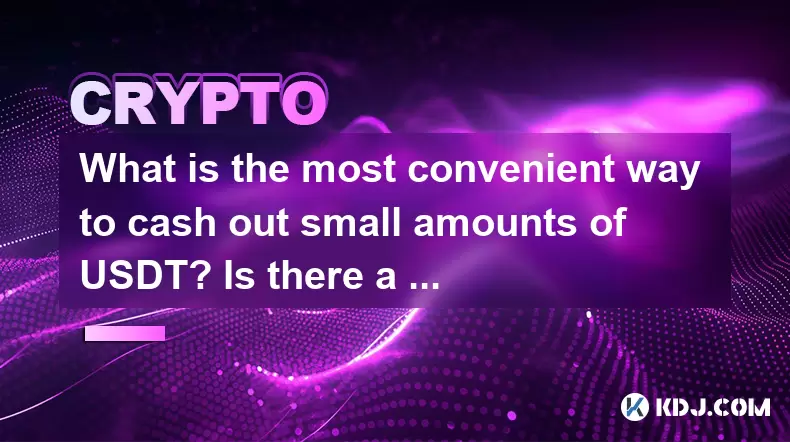
What is the most convenient way to cash out small amounts of USDT? Is there a shortcut?
Jun 11,2025 at 11:00pm
Understanding the Need to Cash Out Small USDT AmountsCashing out small amounts of USDT can be a challenge for many crypto users. Traditional methods o...

How to transfer USDT to PayPal or international payment tools?
Jun 15,2025 at 05:28am
Understanding the Basics of USDT and PayPal IntegrationUSDT (Tether) is a stablecoin pegged to the US dollar, offering blockchain-based value transfer...
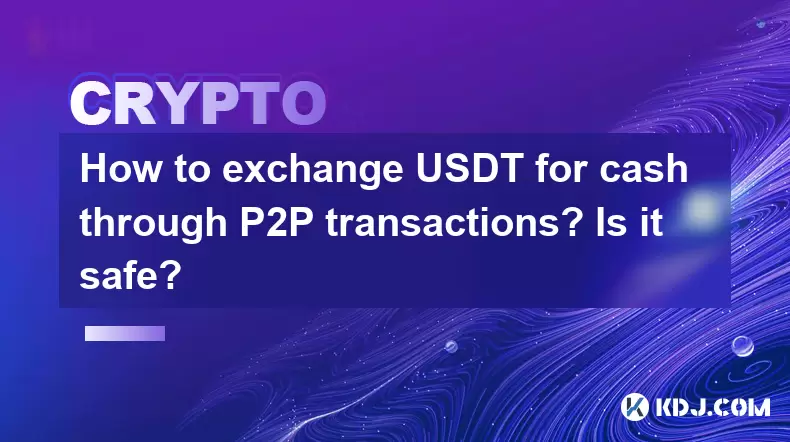
How to exchange USDT for cash through P2P transactions? Is it safe?
Jun 18,2025 at 07:56am
Understanding USDT and P2P TransactionsTether (USDT) is a stablecoin pegged to the value of the US dollar, making it a popular choice for users who wa...
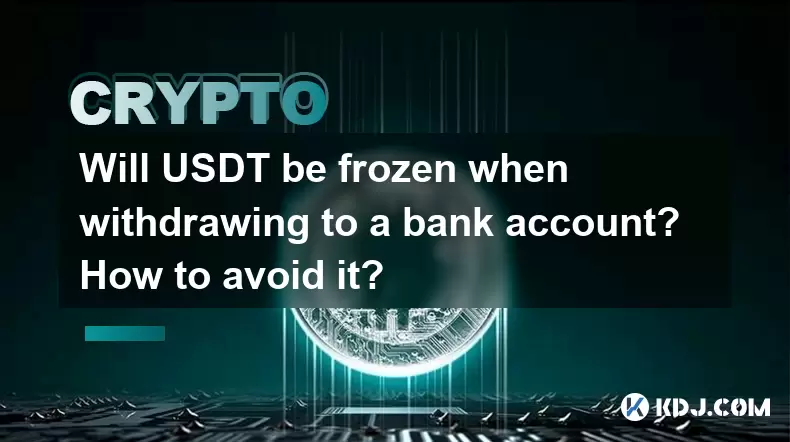
Will USDT be frozen when withdrawing to a bank account? How to avoid it?
Jun 15,2025 at 10:03am
Understanding USDT Withdrawals and Bank Account Freezing RisksWhen users decide to withdraw USDT (Tether) to a bank account, one of the most common co...

How to avoid risks when exchanging USDT for cash? What are the pitfalls?
Jun 11,2025 at 08:14pm
Understanding the Risks of Exchanging USDT for CashWhen exchanging USDT (Tether) for cash, users must be aware of the potential risks involved. As a s...

How to choose a reliable USDT exchange service provider? How to identify?
Jun 12,2025 at 03:15pm
Understanding the Role of USDT in Cryptocurrency TradingUSDT (Tether) is one of the most widely used stablecoins in the cryptocurrency market. It is d...

What is the most convenient way to cash out small amounts of USDT? Is there a shortcut?
Jun 11,2025 at 11:00pm
Understanding the Need to Cash Out Small USDT AmountsCashing out small amounts of USDT can be a challenge for many crypto users. Traditional methods o...

How to transfer USDT to PayPal or international payment tools?
Jun 15,2025 at 05:28am
Understanding the Basics of USDT and PayPal IntegrationUSDT (Tether) is a stablecoin pegged to the US dollar, offering blockchain-based value transfer...

How to exchange USDT for cash through P2P transactions? Is it safe?
Jun 18,2025 at 07:56am
Understanding USDT and P2P TransactionsTether (USDT) is a stablecoin pegged to the value of the US dollar, making it a popular choice for users who wa...

Will USDT be frozen when withdrawing to a bank account? How to avoid it?
Jun 15,2025 at 10:03am
Understanding USDT Withdrawals and Bank Account Freezing RisksWhen users decide to withdraw USDT (Tether) to a bank account, one of the most common co...

How to avoid risks when exchanging USDT for cash? What are the pitfalls?
Jun 11,2025 at 08:14pm
Understanding the Risks of Exchanging USDT for CashWhen exchanging USDT (Tether) for cash, users must be aware of the potential risks involved. As a s...
See all articles
























